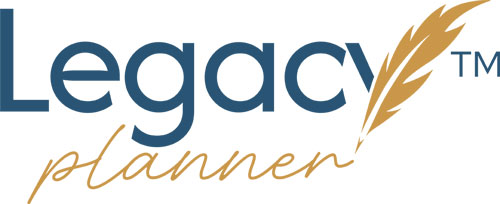License granted for videos. Contact us to get the code.
License granted for videos. Contact us to get the code.
Real Impact, Real Donors
Special thanks to Gary Bukowski (below) for sharing these personal stories from his years in the field. If we included every client story like these, we’d need several thousand more pages. But here are just a few that quietly show the lasting power of planned giving.
Planned giving, at its core, is a substantial donation arranged during a donor’s lifetime but allocated from their estate or given over time. Implementing a strategic marketing approach to cultivate planned gifts can fundamentally transform your organization’s financial landscape, providing stable long-term footing for your mission. Financial advisors increasingly recommend planned gifts to their clients (which is why we provide advisor-centric tools).
Neglecting planned giving is comparable to ignoring iceberg warnings on the Titanic’s voyage. Nonprofits are vulnerable to sinking just like that “unsinkable” ship—and planned gifts serve as essential lifeboats when financial waters become turbulent.
Even organizations that minimally engage in planned giving generate 50-100% more funding than those that don’t.
From Modest Beginnings to a $750,000 Legacy
During my time in higher education, I worked with a donor who wanted to establish three endowed scholarships—one honoring her parents, one for a close friend, and one for a lifelong supporter. We started the scholarships while she was living, but it was her planned gift that brought them to life. After her passing, her estate added over $750,000—funding those scholarships permanently and helping students every year since.Gary Bukowski, Former Higher Ed Development Officer
Without a planned giving strategy (such as a straightforward 12-month marketing plan), you’re missing substantial funding opportunities that competitors are capturing instead.
The nonprofit landscape is crowded—the Urban Institute reports over 1.78 million nonprofits registered with the IRS. While your organization invests precious resources simply to stay afloat, others leverage planned giving not just to survive but to thrive and chart a course toward sustainable growth.
Planned giving serves as a powerful retention strategy. Donors who make planned gifts typically increase their contributions over time and remain engaged with your organization longer.
One Conversation, a Million-Dollar Legacy
A donor once established a scholarship during his lifetime. We had a simple conversation about how he could grow it with a bequest. He took the idea seriously—and followed through. After his passing, the scholarship grew to $1 million and has been helping students ever since.Gary Bukowski, Former Higher Ed Development Officer
Please view our 60-second video message above. It’s available for your use, and your board will appreciate its clarity.
Financial experts project an unprecedented wealth transfer of $40-140 trillion over the next five decades—the largest in human history.
For perspective on these figures: a million seconds equals 12 days; a billion seconds spans 31 years; a trillion seconds extends 31,000 years.
A concerning RBC Wealth Management study found that 30% of Americans have done no wealth transfer planning whatsoever. This represents an extraordinary amount of potential funding without designated recipients. In 2023 alone, according to Giving USA, Americans donated over $400 billion to charitable causes. Imagine how much more remains available for organizations that actively pursue planned giving opportunities.
Individual donors account for 71% of all charitable gifts in America according to Giving USA. Many supporters cannot make large one-time contributions but desire greater impact. Furthermore, Target Analytics reports that only 29% of first-time donors become repeat contributors.
Planned giving addresses these challenges by enabling donors to make more significant financial impacts than one-time gifts allow. Despite these advantages, fewer than 10% of Americans utilize planned giving options.
A Legacy That Opens Doors for Children
When I first started at a local nonprofit, I met a donor who cared deeply about children’s enrichment. I asked her to consider a planned gift. She quietly promised she would. Years later, after her passing, her estate created a fund that gives underprivileged kids access to experiences outside the center—something she always wanted to see.Gary Bukowski, Former Higher Ed Development Officer
By overlooking planned giving, organizations effectively close the door on reaching a broader segment of potential supporters. The good news: diverse planned giving vehicles exist—life insurance, bequests, annuities, trusts, retirement plan assets, securities, and property gifts—providing flexibility for donors across various financial circumstances.
Economic fluctuations directly impact nonprofit donations. According to Blackbaud research, Baby Boomers currently account for over 40% of all charitable giving in the U.S.
Relying exclusively on annual giving and individual gifts is equivalent to putting all your financial eggs in one basket. When that funding basket drops, recovery becomes extraordinarily difficult. Following economic downturns, the number of nonprofits seeking bankruptcy protection rises significantly—a practice once rare but now increasingly common.
Today’s donors expect charities to operate with business-like accountability and demonstrate tangible results. Organizations that cannot adapt to this reality face not just failure but public accountability for that failure.
The Chronicle of Philanthropy confirms that Planned Giving is Having a Moment. Financial advisors, wealth managers, and industry experts all agree: Planned Giving is “hot” these days. Organizations that capitalize on this momentum position themselves for sustainable success while those that hesitate risk being left behind.

Making Estate Planning Accessible, Simple, Personal, Secure and FREE!
Bequests are up, cash is down. Empower your donors to plan their will and invest their legacy in the cause they support the most.
Please reach out. Note: if you give us your mailing address (or PO Box), we’ll send you a complimentary Planned Giving Gift Comparison Chart.